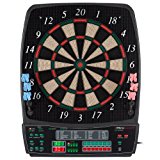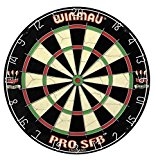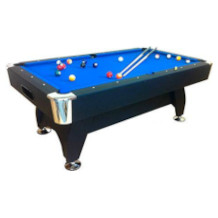Foosball table purchasing advice: how to choose the right product
- What you need to know
- Table football tables are miniature football fields. Two to four players attempt to score goals against one another, using 22 players attached to 8 different rods.
- Depending on the model and materials used, tables are between 60cm to 70cm tall and weigh between 20kg and 100kg.
- Wooden balls are the standard, although cork is a quieter alternative. Plastic is best suited for practicing different techniques and tricks.
- Some countries like Germany even have table football leagues.
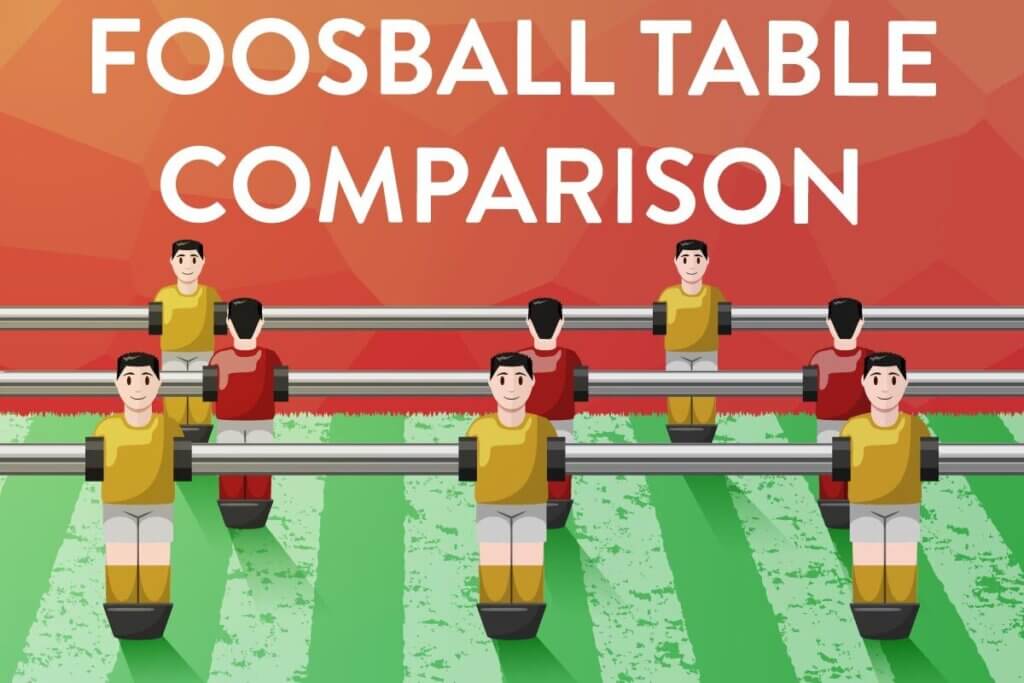
Goals win games
Table football is a well-loved game, played across youth centres, sixth form common rooms and, increasingly, in bars and semi-professional settings. Table football tables are a must have in any start-up office, helping to keep employees in a good mood during their breaks. Bulky monstrosities of days gone by have now become slender professional machines which are used in leagues and tournaments.
Table football brings people together, animates them and requires an intimate proximity to your fellow players. A true game of the people, it is as loved as a method of whiling away the midnight hours as it is prized by zealous bosses, always searching for their next teambuilding exercise. No kind of affinity to normal football is needed in the slightest to enjoy table football. Just because the ball is round, it doesn’t mean that a game of table football needs to last for 90 minutes. Table football improves reaction speeds, as well as the hand-eye coordination of players.
What did you call it?
In the UK, “table football” is the most common term for the game. Americans, meanwhile, are far more likely to know table football as “foosball”, a term thought to be based on the German word for football: “Fußball”. Curiously, the Germans don’t use this word themselves. They instead call table football “Kicker” (which has a satisfyingly literal ring to it). Best of all, perhaps, is the French name for table football— ‘le babyfoot’.
From humble beginnings
Englishman Harold Thornton was the first to develop a table football table at the beginning of the 20th century. In 1937, a patent was registered by the Spaniard Alejandro Finisterre. Both men are considered the inventors of table football as we know it. Despite being popular worldwide, table football has found particular popularity in Germany and the USA, where it is often played in bars and pubs.
Various regulatory organisations have been set up over the years, including the ITSF (International Table Soccer Federation), which acts as an official organising body and competition regulator. The game is even registered with the International Olympic Committee — although there is little chance we will be seeing it at the next Olympics.
How is a foosball table put together?
Table football tables are miniature football pitches on four legs. The 22 playing figures are attached to eight moving rods with grips attached to their ends. Each side controls 11 players mounted on 4 rods. The usual formation is not one commonly seen in the Premier League: one goalkeeper, two defenders, five midfielders and three strikers. This formation can vary depending on the table. There are openings at each end of the pitch which represent the goals. Once a goal has been scored, the ball can be retrieved either from under the goal or in an opening on the side. The score is counted manually using an abacus-style counting system, although some tables automatically keep track of the score.
What to look out for
The size is the main thing to take note of when buying a table football table. Models also differ in their weight, materials, and design. Regular players and those looking to get into playing professionally should be aware of how the tables are constructed, as well as the versions with different player formations.
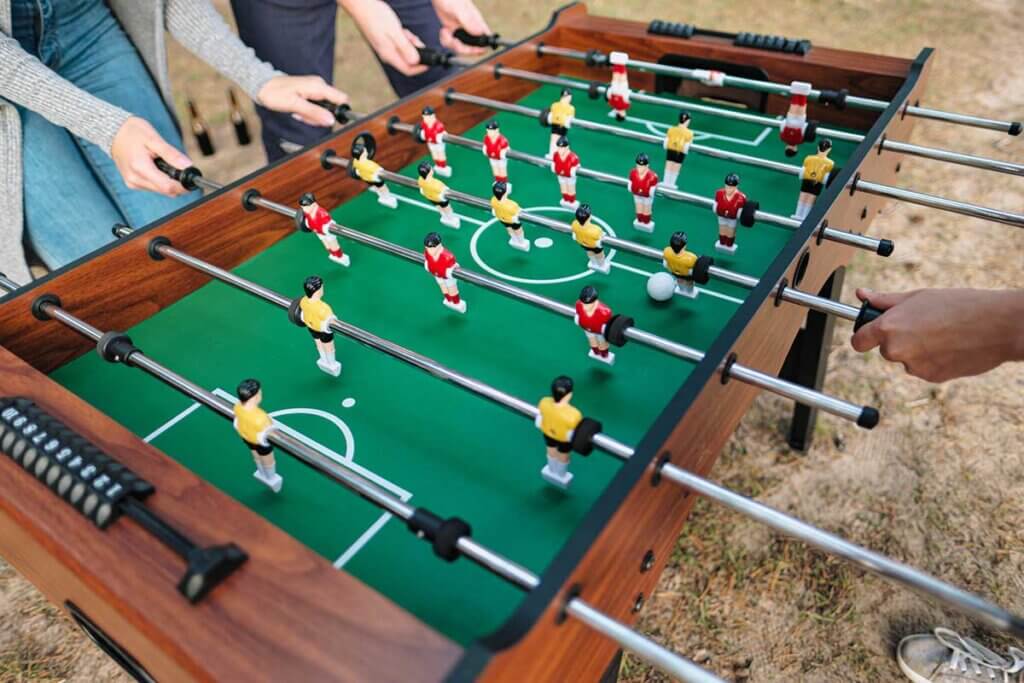
The size
The size of the table is important to help prevent you from getting backpain while playing. The height of normal tables usually varies between 60cm and 100cm. For people taller than 170cm, it’s advisable to play on a table of at least 85cm to 95cm in height. Height adjustable tables are particularly useful, if the table is shared between lots of different users. Only a very small number of models come with this function.
Table football tables are usually 115cm to 125cm long and 65cm to 75cm wide. These dimensions can vary for special models, for example XXL tables, which can be played on by up to eight players at once. Standard-sized tables need a surrounding space of around 2.5m² to 3m² to allow for the players to have enough room to position themselves and move around.
The weight
Table football tables usually weigh between 20kg and 100kg. Smaller tables are correspondingly light but are only really suitable for children. Adults, meanwhile, require a table that weighs at least 70kg to 80kg. This extra stability is important because energetic games can involve significant amounts of strain on the table.
The material
Traditionally, the frame of a table football table is made from wood. More modern models, however, often use cheap plastic. It’s important that the players are made from a sturdy material. This guarantees that they don’t break upon impact with the ball. The rods and other parts are often made from stainless steel or titanium. That said, there are no limits on the materials that can be used. Gold plating is not unheard of for the most exclusive models.
The rods
The rods are either made from solid material or hollow on the inside. The strength of the material also determines the strength of the rod. Telescopic rods are nearly always hollow. The advantage of telescopic rods is that they only stick out of one side of the table, helping to reduce the risk of injury. The downside is that they are less stable than solid materials. During energetic matches, they are liable to bending. The height of the rods above the playing surface should measure 85mm. Some rods are mounted on ball bearings, which has a negative effect on the movement of the rods and reduces the natural flow of the game.
The table construction
Table football tables can either be bought fully assembled or in flatpack form. A stable playing surface should be at least 16mm thick. Adjustable legs are a particularly practical addition as they allow you to balance out any unevenness in the ground. Rubber feet help to keep the table in place and prevent damage to the floor. This is especially useful for parquet or laminate floors. The handles are made from either plastic or wood and can take different shapes and forms. Rubber covers help professional players to gain even more grip. Some models even come with two drinks holders. The hole from which the ball can be retrieved after a goal is usually found underneath the goal or on the side.
The ball
Table football balls are available in different versions. The balls differ most visibly in size and material. Wood, plastic and cork are the most commonly used materials. Different materials have an effect on the weight, as well as the surface of the ball, which is important for ball control and technique.
Wooden balls are best suited to a quick game as they are robust and rarely jump from the table. They do, however, create significantly more noise than other materials. Balls made from cork are much quieter. Cork offers a practical alternative for table football balls at home or in the office as it doesn’t create as much noise. The downside to cork balls is that they are slow and bulky, essentially preventing fast play. Balls made from plastic are favoured by those who are into skills and tricks. Their rough surface allows for improved ball control. On the flip side, they can be noisier.
Improvised balls
Table tennis balls are a poor ball alternative. Their light weight prevents a player from generating any kind of power behind a shot. Due to their weight and slippery surface, it is nearly impossible to keep the ball under control. Accordingly, the ball is likely to frequently fly out of the table.
The price
Cheap models can be bought for less than £400, however, most of these tables are less robust and can only be bought as flatpack. Better-quality models which are already assembled upon purchase are a lot more stable. They are likely to cost between £400 to £800.
A game for everyone and anyone
Depending on where you wish to use them, table football tables come in different versions for children, the office, the pub, or tournaments.
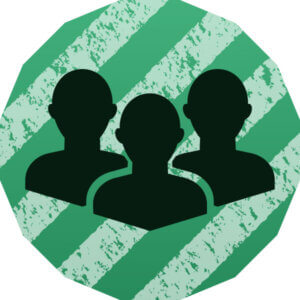
For companies
Having a table football table in the office can be a great way to get employees to interact with one another in their breaks or relax at the end of the day. Table football requires concentration and helps to build teamwork skills. Table football tables for the office are especially sturdy to ensure that they withstand the daily stresses of office life. These models are conceived for regular and intense use by adults.
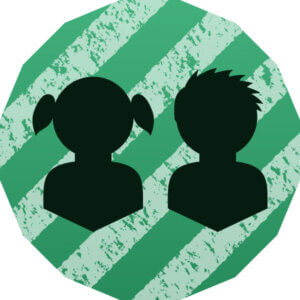
For kids
Table football tables for kids are mostly aimed at children between the ages of three and twelve. For three year-old children, the tables are especially small, with only a few players on each side. Most models are adjustable so that kids can continue to play as they grow. Some models even allow for the playing surface to be swapped for one with more players. This also allows older children to play on the same table. Most tables are also foldable, which helps with storage.
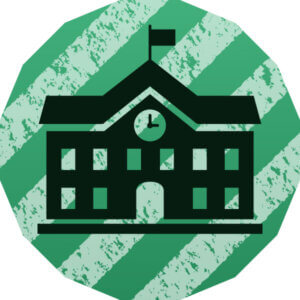
For schools
Table football tables can always be found in schools and youth centres. This is a great method to give kids something productive to do in their breaks and between lessons. These tables are usually extremely sturdy, resilient, and robust. They are similar in nature to the versions for adults and are capable of withstanding the force of teenagers messing around. A plastic cover helps to prevent theft and vandalism.
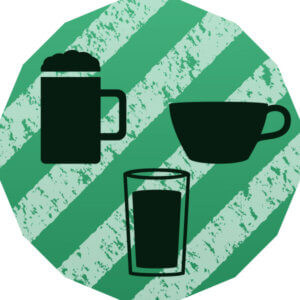
For bars
Table football tables for bars and pubs tend to align with standard models for adults. The difference is that these tables often come with a coin slot. This allows for balls to be rented for use. These machines usually accept coins, although they can be modified to accept notes or other kinds of tokens. Integrated drink holders and even ashtrays are not unheard of for such tables.
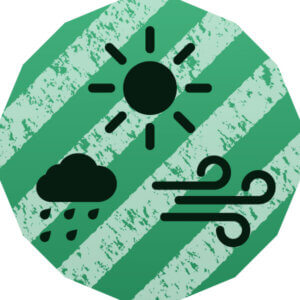
For outside use
Tables can sometimes be found on busy shopping streets, public spaces, parks, and open-air swimming pools. Some people also like to keep their table on the lawn or the patio. These models are characterised by their long lifespan. They are extremely robust and protected against fluids and dirt. Even direct sunlight can do little to damage their weather-resistant material. A glass top and plastic covering make sure that the field and table stay dry.
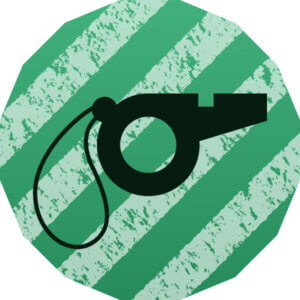
For tournament use
Tournament tables are given an official status by a governing body, allowing them to be used for league events. These tables are treated like pieces of sporting equipment. They are made with quality materials and built to exact dimensions. They are significantly heavier that other tables, which prevents the game from being influenced by force exerted on the table. These tables are usually suitable for use in a number of different environments.
Professional maintenance
Keeping your table clean doesn’t require much more than a little lukewarm water and some gentle cleaning products. A cloth is perfect for gently cleaning the dirty parts of the table. Silicon oil is recommended for use on the rods as it removes dirt and reduces friction.
Tips for serious players
Having your own table football table offers you the opportunity to train based on the official rules and set up the game just like the professionals.
Practice makes perfect
In private matches, fair play is as important as anything else. As long as you and your opponents are clear on the rules before you begin, there should be nothing to stop you having a good game. Only with professional level games do the rules really become important.
In tournaments, the rules are set by the responsible governing body. The basic rules are, however, unified across national federations who have agreed to follow international guidelines. The basic rules are as follows:
- It is forbidden to turn the rod more than 360 degrees (spinning).
- It is forbidden to lift the table.
- Players are not allowed to reach onto the table.
- At kick-off, the ball is placed in the middle of the table and not thrown in.
- There is a predetermined ball contact time limit for each rod.
- Lobs are not allowed.
- Breaking the rules results in a freekick for the opponent.
Keeping the ball on the deck
To make the game a little more professional, several types of shot have been identified as the basic techniques needed for anyone looking to get into table football. It’s important for each shot that the players don’t spin more than 360 degrees, and that the 12 second time limit isn’t exceeded. Any divergence from this will result in a ball turnover.
Pin shot: this is the most common shot in Europe. The ball is trapped by the central striker, either in front or behind. The figure then moves quickly, either to the left or to the right, shooting past the defender.
Jet/snake: this type of shot is similar to the pin shot. This time, however, the player doesn’t move behind the ball. Instead, it is rotated in an almost complete rotation, before being whipped back into contact with the ball. Any rotation over 360 degrees is a foul.
Pull/push shot: the pull/push shot begins with the ball placed next to the feet of the player. The player then pushes the ball in the desired direction.
Bank shot: this shot can be played from any position on the pitch but is most often employed by defenders. The ball is shot perpendicular along the edge of the pitch. If done correctly, the ball can end up rolling down the bank and into the goal.
Squeezer: here, the ball is pinned between the foot of the player and the pitch, the player exerts pressure on the ball and makes a horizontal movement, causing the ball to catapult forwards.
Daily training
You can train for your upcoming matches on training tables with smaller dimensions. On each side there are just two rods, which can be swapped at will. There are similar models which are suitable for all kinds of training at home. This shrunk-down version of table football usually comes with a glass top, allowing it to be used as a spare table.
These different kinds of shots can either be carried out with an open or closed hand. The grip has an impact on the strength and accuracy of the shot.
Shots with the hand closed involve the hand covering the entire grip. The power for these shots comes from the wrist, meaning that the precision is increased.
A shot with the hand open, meanwhile, does not enclose the entirety of the grip. The thumb is parallel to the pole with the fingers underneath the grip, as if you were about to lift the table up. The hand is then rolled upwards, giving the shot extra power without extra effort.
Image 1: © FinalCheck | Image 2: © spaskov / adobe.stock.com | Images 3-8: © FinalCheck

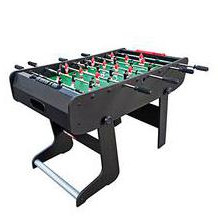
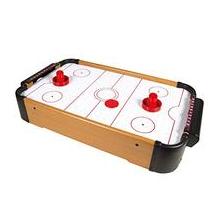
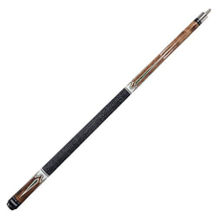
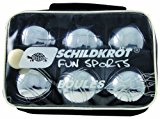







 2,933 reviews
2,933 reviews
